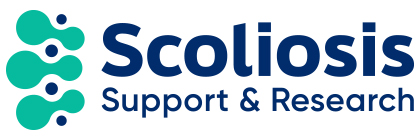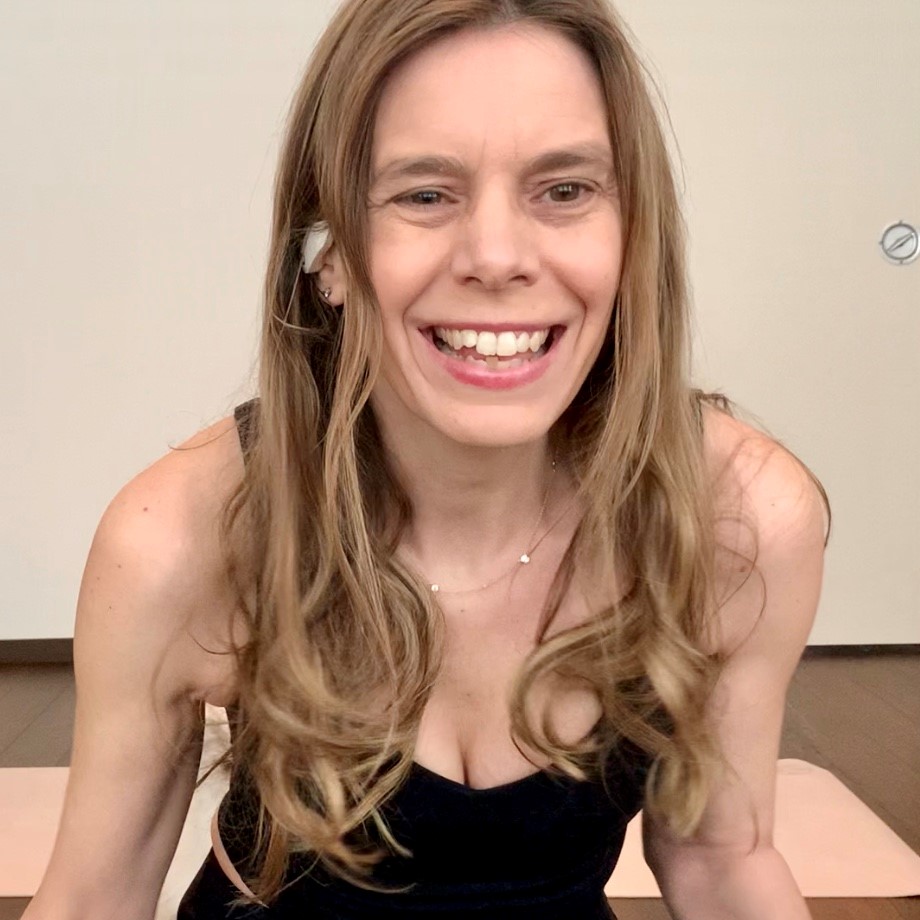Monday – Friday 9am to 5pm
Rebecca Weil
Rebecca Weil is part of the British Scoliosis Research Foundation (BSRF) Grants Committee. The BSRF is SAUK’s sister charity, which exists to stimulate and finance high quality research into scoliosis.
Rebecca brings to the Grants Committee over 20 years of international experience in strategy and operations in the healthcare industry, and her lived experience of scoliosis.
Rebecca grew up in Boston, where, when she was 13, she was sent for a routine scoliosis screening before gym class. She was told in the screening that her hips were uneven and that that was a sign of scoliosis, so to go see a scoliosis specialist. She was soon diagnosed with an S curve, as well as kyphosis and lordosis.
On how she felt at the time of diagnosis, Rebecca says:
It made me quite anxious. I was thinking “what does this mean? Do I need surgery? Do I need a brace? Will people know if I have a brace?” This was in the 80s, so I had a lot of questions, but I didn’t know of an organisation like SAUK to go to for answers.
It was a lonely journey. I didn’t know anyone else who had scoliosis during this time. I was fortunate that the curves were minor, I was monitored throughout my adolescence, but I got to 17 and they were still moderate. The specialist felt I was stabilised, so I didn’t need any intervention beyond some physiotherapy. It was a huge relief that I didn’t have to have a major surgery.
For the next several years, the scoliosis didn’t affect me much, so it slipped to the back of my mind. That was the case until I moved to London in my 30s. I had a busy lifestyle, working in healthcare, commuting, travelling, and with that, I started to get more back pain. I suspected it was related to the scoliosis and kyphosis but wasn’t sure. I started physiotherapy again but from there was fortunate to discover yoga.
A friend of mine was a physician and a yoga teacher, and she did a one-on-one class with me, just basic stretches and breathing. She helped me so much, it helped with pain management but also that body awareness, when was I stressing my body too much? When did I need to rest? When did I need activity and movement to help me feel better? I still got some pain, but I learnt to manage it for many years. I also discovered Pilates, my Pilates instructor actually had scoliosis herself and she was one of the first people I met that shared that experience and who I could talk to about it. She’s taught me a huge amount, but it also opened my curiosity and made me more interested to learn about this condition I’d been living with for 30 years.
The pandemic was a turning point for me too. I finally had the time and inclination to do yoga teacher training. As part of that, we had an anatomy course and the instructor did a module on scoliosis where they explained the condition, showed examples of X-rays and talked about how it would affect students in yoga classes and why a teacher should be aware of it. I thought it was so great they were doing this as part of the yoga teacher training, yoga instructors I’d seen in the past often didn’t have that sensitivity and understanding of scoliosis. I was interested to learn more, so the instructor gave me a couple of books to read and some videos.
When I finished the training, I found a teacher in London doing an online yoga for scoliosis programme. Once again, that instructor herself had scoliosis and there were maybe 5 or 6 of us in the programme, they were mostly around my age, 40s or 50s, and all experiencing some pain relating to their scoliosis. Some of them had surgery or intervention and others, like me, had not. It was wonderful to have this community all of a sudden and these people to talk to, not only about the physical side of it, but also this fear or denial that we’d lived with for many years but didn’t really think about or articulate. It was really a gift to have that group.
Shortly thereafter I got a herniated disc and nerve compression in my neck in the cervical spine, an acute episode. I had an MRI, saw a specialist and they spoke about surgery for the neck, but I had a panic attack in the office, which I’d never had before. I calmed down and went home and thought about what I could do. When I need to solve a problem in my job, I talk to experts and I educate myself, so I took that philosophy into this part of my life. I read everything I could find from reputable resources online, and that’s how I found SAUK. I was looking for other adults who had idiopathic scoliosis since they were teenagers to see how that was affecting their spines now. I had a physiotherapist to help me with my neck and I asked her lots of questions too. One of my best friends is a doctor and she encouraged me to go see a scoliosis specialist even though the herniation may or may not have been related to that. So, I did, which I was very nervous about. I went for my X-rays, which I realised I hadn’t done since I was 17 but it turns out my curves hadn’t progressed. I remember being just below 30 degrees and it was still there. It felt really good to have that answer and to talk to a specialist as an adult, and it made me question why I hadn’t taken that step before.
As all of this was happening, I was looking for more opportunities to do volunteer work for charities in the healthcare area, because that’s what I feel really passionate about and that’s what my professional experience is in. I came across BSRF and spoke to people who were part of that group and learnt about the Grants Committee, who assess the research funding applications the BSRF receive. They asked if I was interested in joining that committee and after speaking to them, I was so impressed by the people, the commitment, the very specialised knowledge they bring, be it medical or scientific. I was also impressed that they wanted to have the voice of the patient represented in the grants committee. I also learnt about the Scoliosis Priority Setting Partnership that they were a part of a few years ago, where they had people with scoliosis identify the issues and questions they would like answered by research. When I thought about which research questions were interesting to me, I thought “why did this happen to me? Why did I get this condition when my mum didn’t have it?” When I was a teenager, I was concerned with what the treatment options were besides surgery but now I question how, throughout your life, can you manage this condition in the best way? I feel like I muddled my way through, mostly thanks to good luck and meeting helpful people. I think the people who do live with moderate scoliosis are in a difficult position too because whilst treatment isn’t necessary, we do often live with pain and other consequences, and we need to figure out for ourselves how to cope with this.
I found that BSRF were tackling these important questions by funding academic research around them. It’s only been a few months since I joined and started to review grants. I feel really privileged to be able to bring a lived experience voice into these discussions. I’m also learning a lot from these discussions with the experts on this committee and the more you can learn about the condition you’re living with, the more empowering it is.
If you would like to talk further about any aspect of scoliosis, SAUK is here to help; please call our helpline or contact us via post or using our e-mail address info@sauk.org.uk.
© 2024 Scoliosis Support & Research | Scoliosis Support & Research is a registered charity no. 1181463
Website design & development by Pedalo

